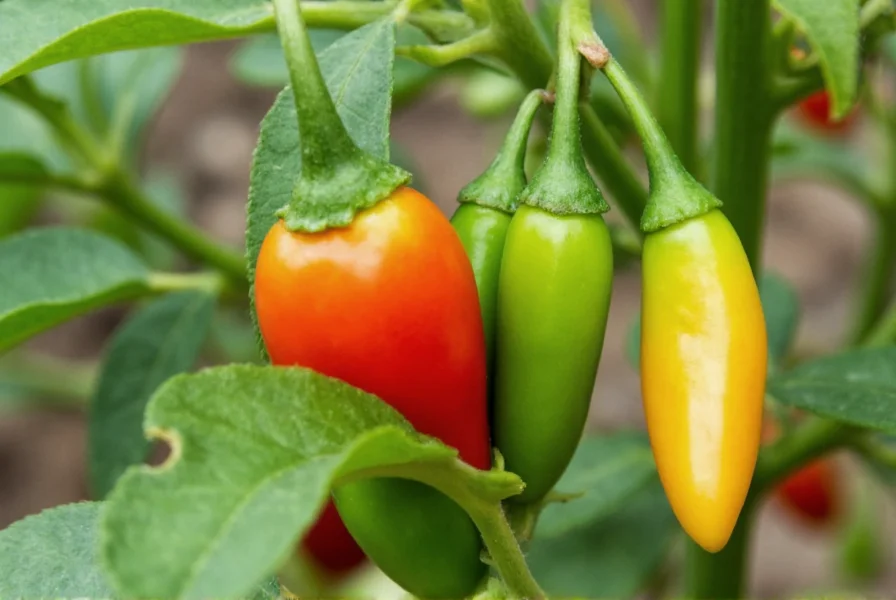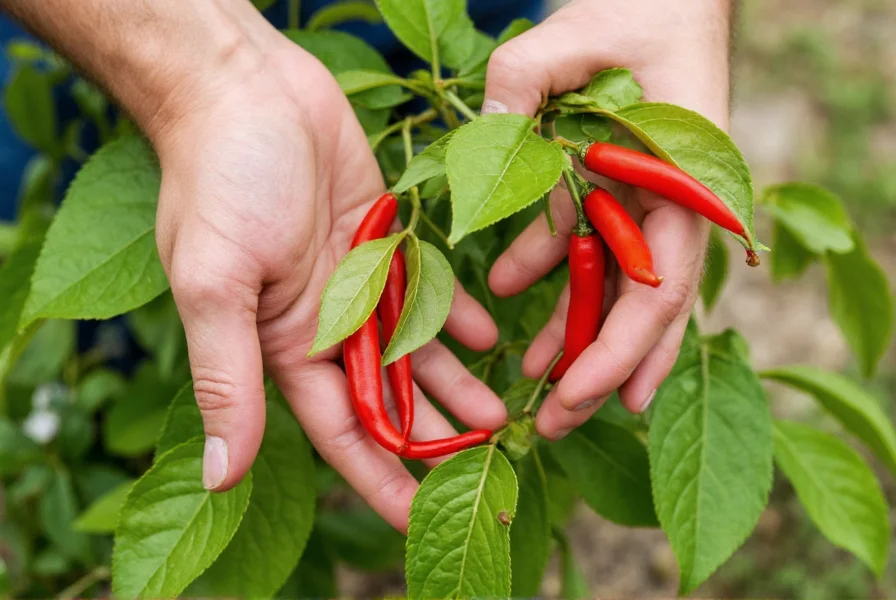Understanding pepper pod development is essential for gardeners seeking successful harvests. These botanical fruits represent the reproductive stage of pepper plants, transforming from delicate flowers into the colorful, edible structures we recognize. The journey from blossom to mature pod typically takes 55-80 days depending on variety, with sweet peppers generally maturing faster than hot chili types.
The Science Behind Pepper Pod Formation
Pepper pod development begins with flower pollination. Unlike some plants that self-pollinate easily, pepper flowers often benefit from gentle shaking or insect assistance to transfer pollen from anthers to stigma. Once pollinated, the ovary at the flower's base swells to form the pod while the petals wither away. This process, called fruit set, marks the transition from flowering to fruiting stage.
During early development, pepper pods contain high levels of chlorophyll, giving them their characteristic green color. As they mature, carotenoid pigments develop, creating the vibrant yellows, oranges, and reds associated with fully ripe peppers. This color transformation signals increased nutrient density, particularly higher vitamin C and antioxidant levels in mature pods compared to their green counterparts.
Pepper Pod Varieties and Their Characteristics
Different pepper varieties produce distinctive pods with unique shapes, sizes, and maturation patterns. Understanding these differences helps gardeners select appropriate varieties and manage expectations:
| Pepper Type | Pod Characteristics | Days to Maturity | Temperature Preference |
|---|---|---|---|
| Bell Peppers | Blocky shape, thick walls | 60-80 days | 70-85°F (21-29°C) |
| Jalapeños | 2-3" long, tapered | 70-80 days | 75-85°F (24-29°C) |
| Habaneros | 1-2" lantern-shaped | 90-120 days | 80-90°F (27-32°C) |
| Sweet Banana | 4-6" curved, thin-walled | 65-75 days | 70-85°F (21-29°C) |
Optimizing Conditions for Pepper Pod Development
Successful pepper pod formation requires careful attention to environmental factors. Temperature fluctuations represent one of the most common challenges for pepper growers. When nighttime temperatures drop below 60°F (15°C) or daytime temperatures exceed 90°F (32°C), blossom drop frequently occurs, preventing pod formation entirely.
Soil nutrition plays a critical role in pepper pod development. During flowering and fruiting stages, peppers benefit from phosphorus-rich fertilizers rather than nitrogen-heavy formulas, which promote leafy growth at the expense of fruit production. A balanced 5-10-10 fertilizer applied at flowering stage supports optimal pepper pod set and development.

Common Pepper Pod Problems and Solutions
Gardeners often encounter challenges with pepper pod development. Blossom end rot, characterized by dark, sunken spots on the blossom end of developing pods, results from calcium deficiency often triggered by inconsistent watering. Maintaining even soil moisture through regular watering and mulching prevents this common issue.
Another frequent problem involves poor fruit set despite abundant flowering. This typically indicates inadequate pollination. Gardeners can improve pepper pod set by gently shaking plants during flowering or introducing pollinator-friendly plants nearby. In greenhouse settings, using a small paintbrush to transfer pollen between flowers significantly increases successful pepper pod formation.
Harvesting and Using Pepper Pods
Timing your pepper pod harvest affects both flavor and plant productivity. Most varieties can be harvested when green, though allowing pods to fully ripen to their mature color increases sweetness and nutritional value. Use sharp scissors or pruning shears to cut pods from the plant, leaving a small stem attached to prevent damage to the plant.
Regular harvesting encourages continued production. When you remove mature pepper pods, the plant redirects energy toward producing additional flowers and pods. For hot pepper varieties, handling pods with gloves prevents skin irritation from capsaicin oils. Properly stored in the refrigerator, most pepper pods remain fresh for 1-2 weeks.

Troubleshooting Pepper Pod Development Issues
When pepper pods fail to develop properly, consider these common causes and solutions:
- Small or misshapen pods: Often indicates incomplete pollination or nutrient imbalance. Try hand-pollinating flowers and adjusting fertilizer to higher phosphorus content.
- Yellowing leaves with healthy pods: Suggests nitrogen deficiency. Apply balanced fertilizer and monitor plant response.
- Dropping small pods: Typically caused by temperature stress or inconsistent watering. Implement mulching and consider shade cloth during extreme heat.
- Pale or sunburned pods: Results from excessive direct sunlight. Provide afternoon shade for sensitive varieties.
Understanding these aspects of pepper pod development transforms gardening challenges into successful harvests. By providing optimal growing conditions and addressing issues promptly, gardeners can enjoy abundant, healthy pepper pods throughout the growing season. Remember that each pepper variety has specific requirements, so researching your particular cultivar's needs yields the best results for growing pepper pods successfully in your climate.











 浙公网安备
33010002000092号
浙公网安备
33010002000092号 浙B2-20120091-4
浙B2-20120091-4